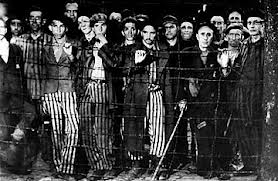In the midst of the frenetic Jade Helm activities, it was easy to lose track about the importance of several events. This is precisely what happpened in Michigan between July 27 and September 15. During that time, troops from several nations, including 3000 Polish troops practiced seizing the guns from American citizens.
As if this wasn’t bad enough, there are details emerging from the event that are very troubling.
When I viewed the above video near the end of July of 2015, I did not think much of this because the nation was embroiled in the massive military exercises associated with Jade Helm 15. At least that was what I thought until I received the following email:
Dear DaveMy husband was involved in a training exercise, here in Michigan in combination with several thousand foreign troops. For weeks, the drills were always the same. They would pull make believe American families out of their homes after they forcibly entered the home look for guns. In the final week of the drill, the exercise to a turn toward the unbelievable.In the final week, after they pulled would-be Americans, played by actors, out of the home, they would search for guns. They forced the family members to kneel on the ground. If they found guns in the home, they pretended to execute the entire family. My husbands platoon was the only American troops at the scene. The Americans did not participate in the raids on the homes. The National Guard troops provided intelligence and communications support for the units. The abuse of the pretend American families was all done by the foreign troops. This has shaken my husband up. He feels he knows what is coiming. The operation was conducted under the UN flag. He wants the word out but does not want to be discovered as an informant. Because of this I cannot sign my name. God help us Dave what are we coming to?It Is Time to Start Asking What Happens to a Nation Following Gun Confiscation?
You ever wondered what happens to a people after gun confiscation? Do they live happily ever after? Not quite. Genocide is the most important development that followes a government stripping its citizens of the rights.
Before we passively allow the Obama administration strip away our last line of defense from an increasingly totalitarian government, by acquiescing to the United Nations and American advocates for gun control, perhaps we should examine the end game resulting from past gun control efforts:
 1. In 1911, Turkey established gun control. From 1915-1917, 1.5 million Armenians, unable to defend themselves against their ethnic-cleansing government, were arrested and exterminated.
1. In 1911, Turkey established gun control. From 1915-1917, 1.5 million Armenians, unable to defend themselves against their ethnic-cleansing government, were arrested and exterminated.
2. In 1929, the former Soviet Union established gun control as a means of controlling the “more difficult” of their citizens. From 1929 to the death of Stalin, 40 million Soviets met an untimely end at the hand of various governmental agencies as they were arrested and exterminated.
3. After the rise of the Nazi’s, Germany established their version of gun control in 1938 and from 1939 to 1945, 13 million Jews, gypsies, homosexuals, the mentally ill, and others, who were unable to defend themselves against the “Brown Shirts”, were arrested and exterminated. Interestingly, the Brown Shirts were eventually targeted for extermination themselves following their blind acts of allegiance to Hitler. Any American military and police would be wise to grasp the historical significance of the Brown Shirts’ fate.
4. After Communist China established gun control in 1935, an estimated 50 million political dissidents, unable to defend themselves against their fascist leaders, were arrested and exterminated.
5. Closer to home, Guatemala established gun control in 1964. From 1964 to 1981, 100,000 Mayans, unable to defend themselves against their ruthless dictatorship, were arrested and exterminated.
6. Uganda established gun control in 1970. From 1971 to 1979, 300,000 Christians, unable to defend themselves from their dictatorial government, were arrested and exterminated.
 7. Cambodia established gun control in 1956. From 1975 to 1977, one million of the “educated” people, unable to defend themselves against their fascist government, were arrested and exterminated.
7. Cambodia established gun control in 1956. From 1975 to 1977, one million of the “educated” people, unable to defend themselves against their fascist government, were arrested and exterminated.
8. In 1994, Rwanda disarmed the Tutsi people and being unable to defend themselves from their totalitarian government, nearly one million were summarily executed.
The total numbers of victims who lost their lives because of gun control is approximately 70 million people in the 20th century. The historical voices from 70 million corpses speak loudly and clearly to those Americans who are advocating for a de facto gun ban. Governments murdered four times as many civilians as were killed in all the international and domestic wars combined. Governments murdered millions more people than were killed by common criminals and it all followed gun control.
Historically, American gun control legislation has been imitating Hitler’s Nazi Germany gun control legislation for quite some time. Consider the key provisions of the Nazi Weapons Act of 1938 and compare it with the United States Gun Control Act of 1968. The parallels of both the provisions and the legal language are eerily similar.
The Nazi Weapons Act
|
United States Gun Control Act
| ||
| 1 | Classified guns for sporting purposes | 1 | Introduced term “sporting purpose” |
| 2 | All Germans desiring to purchase firearms had to register with the Nazi officials and submit to a background check | 2 | Exempted government agencies from the controls which applied to law-abiding citizens |
| 3 | The law assumed that non-Nazi German citizens were hostile and thereby exempted Nazi’s from the gun control law | 3 | The Law assumes that mentally ill people will turn their guns on innocents and the government is given the power to limit the purchase by people DEEMED to be a threat by labeling them as mentally ill. |
| 4 | The Nazi’s assumed unrestricted power to decide what kinds of firearms could, or could not, be owned by private persons | 4 | Authorized the Secretary of the Treasury to decide what firearms could or could not be owned by private persons |
| 5 | The types of ammunition that were legal were subject to control by governmental bureaucrats | 5 | The types of ammunition that were legal were subject to control by governmental bureaucrats |
| 6 | Citizens under 18 years of age could not buy firearms and ammunition | 6 | Age restriction of 18 years and 21 years were applied to anyone who wished to purchase firearms and ammunition |
Thomas Jefferson was very clear in his writings regarding the right to bear arms. Jefferson knew that the preservation of the Republic ultimately rested upon a well-armed citizenry. Jefferson felt it was absolutely necessary for American citizens to be able to protect themselves. The protection that Jefferson spoke of was not from our obvious enemies of the day (France and Britain), but from our own government. Jefferson made this point quite clear when he admonished future generations of Americans to fulfill their duty to overthrow a government if they failed to serve the needs of the majority of its citizens.
Private ownership of guns is the necessary component needed to fulfill the Jeffersonian mandate for national self-defense. Yet, increasingly and reminiscent of Nazi Germany, the United States government is incrementally chipping away at private citizens right to own a gun. This does doesn’t make sense because FBI statistics clearly show that 90% of the guns used in the commission of a crime are stolen! Does the government really believe that criminals, both American citizens and illegal aliens, as well as terrorists, are suddenly going to perform their civic duty and immediately register their guns? How is America better-served if the only ones who don’t have access to guns are the law-abiding citizens? So, one must ask who are the gun control laws designed to protect and why?
Still think Obama is harmless?
Finally, most would wonder what gun confiscation would look and feel like in America. Nobody knows because it has never happened. It is only a matter of time.
Credit to Common Sense



